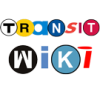GreenTRIP Connect

|
This page is a "stub" - it needs more content.
You are invited to add your knowledge. Please contribute! |
Introduction
GreenTRIP Connect is a free online tool that allows you to quickly estimate the transportation effects of a proposed development in terms of average daily driving and average daily greenhouse gas emissions. You can then see how these estimates could be affected by strategies such as unbundling parking and provided free memberships to transit, carshare, or bikeshare. In the Bay Area, Connect can also be used to model parking demand in the Bay Area, and the space and cost savings of parking reductions.
How it Works
To start assessing a project in Connect, you first select the lot on a map. Then you can enter in simple data on the development like number, size, and price of the units and number of parking spaces. The tool will then give you estimated of driving and greenhouse gas emissions per unit and for the building as a whole. Once a baseline has been established, you can add data about whether or not affordable units will be included. You can also select whether or not you will use any of the four GreenTRIP Strategies: unbundled parking, transit passes, carshare memberships, or bikeshare memberships. Connect will then model the reductions in driving and emissions with these changes.
In the Bay Area, Connect can be used to model parking use in the same way as driving and emissions. If you input the price and type (surface/structure/underground) of parking, the tool can show the price and space savings associated with potential reductions in parking.
Methodology
Connect bases its model on three factors: vehicle miles of travel (VMT), GreenTRIP Strategy VMT reduction, and parking prediction.
- VMT - Using a Center for Neighborhood Technology (CNT)[1] white paper, Connect models the VMT impact of a proposed project using four variables: income, location efficiency, household makeup, and regional context.
- GreenTRIP Strategies - The initial VMT model is then fine-tuned based on research into four methods for reducing VMT: unbundled parking, transit passes, and carshare and bikeshare memberships[2].
- Parking prediction - In the Bay Area, Connect can model parking effects using data from the GreenTRIP parking database and a parking model developed by CNT and TransForm[3].
Applications
Cities can use Connect in a variety of ways. Because it is a free, simple tool, it is easy to incorporate it into the development review process by either recommending or requiring that developers do a GreenTRIP analysis on any proposed project. On a long-term level, data from Connect can be used to modify zoning codes or specific plans. Connect is also a useful tool for community engagement, giving members of the public a look into the development process.
Several cities in California have formalized strategies recommended by GreenTRIP. Emeryville requires that all new multi-unit residential developments submit a transportation demand management plan ensuring that the projects create per-resident VMT lower than the city average. Connect is used determine whether this mark has been met.
GreenTRIP Connect
References
- ↑ Newmark, Gregory L. and Peter M. Haas. "Income, Location Efficiency, and VMT: Affordable Housing as a Climate Strategy." 2015.
- ↑ TransForm. "Methodology: Impact of Car Sharing Membership, Transit Passes and Bike Sharing Membership on Vehicle Miles Traveled." 2016.
- ↑ Center for Neighborhood Technology. “Methodology: The Parking Model.” 2016.